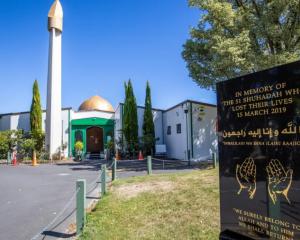
These have been questions that have defined the life of Distinguished Professor Peter Schwerdtfeger, who last night received the Royal Society of New Zealand's highest honour, the Rutherford Medal.
Like many great minds, Professor Schwerdtfeger's introduction to science came with a simple chemistry set.
Innocent experiments in his home in Stuttgart, Germany, took a turn for the dangerous when he got his first chemistry textbook. The equation of potassium chlorate plus phosphorus was swiftly discovered to equal the evacuation of the five-storey apartment building his family were living in, followed by a visit from police.
"I wouldn't do that now," he said with a chuckle.
He arrived in New Zealand in the 1980s - a Jacques Cousteau documentary had proclaimed it "the last paradise on earth" - and by the end of the decade had begun to establish himself as one of the country's few theoretical chemists.
In one of his first big breakthroughs, he drew upon Einstein's Theory of Relativity to give new understandings of what gives gold its unique metal colour. Carrying on this work, he has sought to reveal what chemical reactions can be caused or influenced in heavy elements like gold when the effects of relativity are factored in.
Last year, Einstein's special relativity was used in calculations and computational simulations to solve a long-standing problem of why mercury is the only metallic element that is liquid at room temperature. Without the effect, the melting point would be around +80C, not -39C as observed.
Today as the director of the Centre for Theoretical Chemistry and Physics at Massey's Albany-based Institute for Advanced Study, Professor Schwerdtfeger occupies a world of such mind-boggling concepts as quantum electrodynamic effects, electroweak interactions and graph theory with fullerene structures.
But fundamental research, he said, had brought countless invaluable benefits to society, from the internet and development of lasers to treat illnesses such as cancer.
That the Rutherford Medal is named after a hero of fundamental science, Sir Ernest Rutherford, made the 59-year-old feel even more delighted to win the honour.
"He's one of the true giants of science ... he's in the same category as Einstein."
Professor Schwerdtfeger has no plans to leave his adopted country, and loves teaching - but makes a point of telling his students not to take everything he says as certain.
The annual Royal Society awards were held at Te Papa museum in Wellington last night, honouring the best in science and research in New Zealand.
The 11 recipients also included Dr Rob Murdoch, general manager of research at the National Institute of Water and Atmospheric Research; Associate Professor Peter Dearden, a geneticist at the University of Otago; and Auckland University clinical scientist Professor Alistair Gunn.
Award for 'cooling cap'
An Auckland professor who developed a "cooling cap" to treat babies with brain injury at birth has been awarded a prestigious medal.
University of Auckland Professor of Paediatrics and Physiology Alastair Jan Gunn was awarded the MacDiarmid Medal for research into using brain cooling to prevent injury in babies who suffer low oxygen at birth.
Professor Gunn developed the "cap" and led research into the best way the technique could be used.
He established that therapeutic cooling was feasible and safe even in very sick newly born babies, and that simple bedside tests could identify babies who might benefit from treatment within an hour of birth.
Professor Gunn led a major international trial involving 25 perinatal centres and 234 babies in New Zealand, the United States, Canada and the United Kingdom.
This trial demonstrated that cooling could improve survival without disability in all but the most severely affected babies.
Follow-ups when the children were 7 and 8 years old confirmed the results, as have eight subsequent published trials carried out by others around the world.
Professor Gunn said he was delighted and honoured to receive the MacDiarmid medal.
"It's only this year, 16 years after publication of our first study and nearly 10 years after the large trials, that mild cooling for reducing the impact of birth-related brain injuries on babies is now universally accepted in New Zealand and overseas," he said adding that they were trying to refine the technique: "There is increasing evidence that natural anti-oxidants such as melatonin can be beneficial when combined with cooling."












